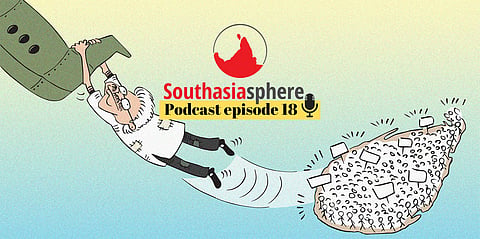Sri Lanka’s new president, by-elections in Punjab, ‘14 Peaks’, and more.
Southasiasphere is our monthly roundup of news events and analysis of regional affairs. If you are a member, you will automatically receive links to the new episodes in your inbox. If you are not yet a member, you can still get it for free by signing up here.
In this episode, we discuss the three-way contest in Parliament to elect Sri Lanka's new president, Ranil Wickremesinghe, after Gotabaya Rajapaksa fled the country and resigned last week amid an astounding protest movement. We also unpack heightened tensions between the Sri Lankan government and protesters, and what the political implications of this dramatic reconfiguration of political roles will be.
In Around Southasia in 5 minutes, we look at Myanmar junta's attempts to roll out Chinese-built surveillance cameras across the country, arbitrary travel restrictions and harassment of journalists and activists in India, Pakistan Tehreek-e-Insaf's (PTI) landslide victory in Punjab by-elections, and more.

